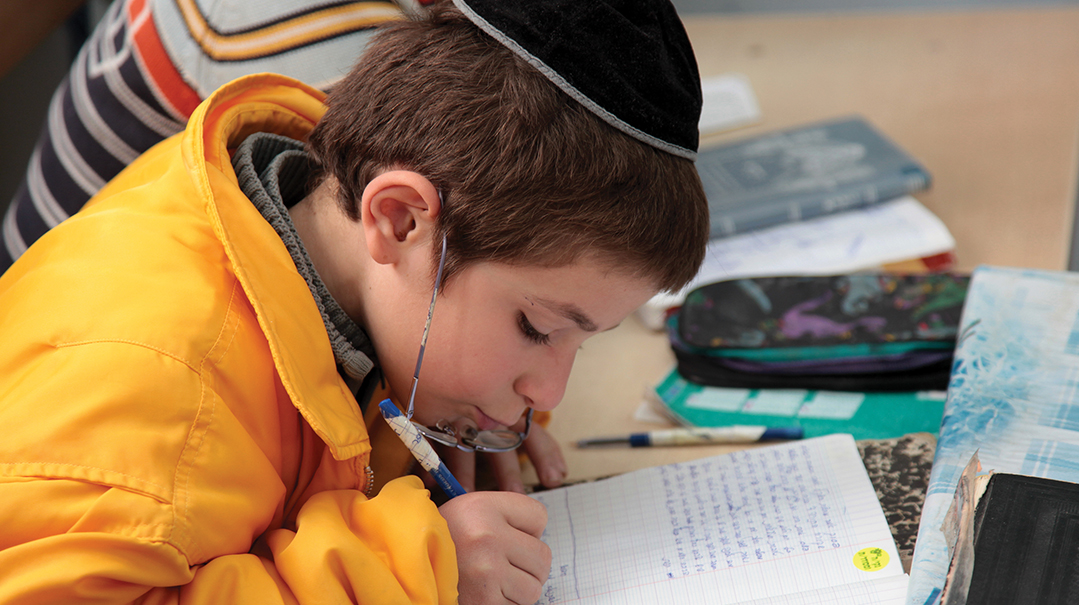Blasts of Tradition
| May 26, 2015
Today, in Yerushalayim and other Israeli cities, the air raid siren takes the place of the traditional six shofar blasts at candlelighting time. In the Tunisian island of Djerba though, the ancient tradition has been preserved. Residents say that the shofar was abolished in other communities due to fear of provoking the non-Jews, but because they live in what is essentially an all-Jewish enclave they’ve continued to maintain this practice since ancient times. On our trip to visit Djerba’s Jews just two months ago, we were looking forward to experiencing it firsthand.
But as Shabbos approached in the Jewish community of Djerba, we found that they had another ways to herald its arrival: The kehillah hires someone to circulate in the Jewish Chara Kabira neighborhood to encourage shop owners to lock up, in addition to the original custom of blowing the shofar.
The Djerban community is proud of its adherence to the ancient rituals, tracing its 2,000-year sojourn on the island to a group of families of Kohanim exiled after the destruction of the Second Beis HaMikdash. While most of the hundreds of thousands of Tunisian and North African Jews have moved to Israel, France, and other countries over the last half century, the Jews of Djerba — all 1,300 of them shomrei Torah umitzvos — have stubbornly held onto their island community, secure in the government’s promise of protection and in the zechus of their unwavering commitment to halachah. Here the boys learn in yeshivah seven days a week until they secure a trade and marry, and chillul Shabbos is unheard of. Today the community — which makes up over half of Tunisian Jewry — is actually on the upswing, as many of the young families have chosen to stay.
And when Shabbos comes in, so does a feeling of old-world tranquility. Rav Chaim Biton, the community rav and official shofar blower, has been ushering in the holy day for the last 50 years. He was a teenager when the previous blower moved away, and has been blowing every Friday since. We arrived at the Rav’s house well before candlelighting: One of us took up a position in the “town square” from where the blowing can be heard, and the other accompanied Rav Biton and his shofar up to the roof. With the serious demeanor of a man who knows his community depends on him, he took his shofar, ascended to the roof, took up his position at one of the highest points in the town, and after frequently looking at his watch, at ten minutes to candle lighting proceeded to blow the first series of tekios. Having given it his all and looking a bit winded, he paced the roof for the next ten minutes and — having regathered his strength — then again took up his position and, as has been done for many hundreds of years, blew the shofar to let his community know that it was once again time to usher in the holy Shabbos.
But we weren’t prepared for what happened next. We quickly stowed away our cameras and rushed off to shul. And sat and waited in a near-empty room. Finally a young man came in and explained to us that most of the shuls wait an hour after candlelighting before davening Kabbalas Shabbos. In the interim though, he gave us a tour of most of the shuls of the Jewish quarter. In one shul there were about 20 young boys chanting Shir Hashirim. We passed by the Jewish school and heard singing, but our guide smiled shyly and explained that he couldn’t go inside. Looking through the window, we saw why: teenage madrichot were leading young girls in the Friday night davening.
No Compromises
Rav Biton fits the Rambam’s description (Hilchos Talmud Torah 1:9) that “among the great sages of Israel were woodcutters and water drawers.” He doesn’t earn a community salary, but supports his family with his small shop that supplies materials and equipment to the silversmiths. He sits there for hours learning and writing his teshuvos until somebody comes in with a question. We squeezed into the cramped shop after someone came in with a sh’eilah and saw he had a pile of ten seforim on his desk, all on issues of mourning. He was toiling over a notebook which, he explained with a touch of pride, contained his responses to various halachic questions.
We learned that before 1948 and the aliyah of the vast majority of North African Jewry, they used a sort of cursive Hebrew script, called “ktav chatzi kulmus” or Solitreo. At a quick glance, it looks like a form of Rashi script, but when you try to read it you realize it’s not the same. Rav Biton told us that he wrote all of his original teshuvos in that script and now he was copying them over into standard Hebrew in order to have them printed.
His painstaking mission to preserve halachah’s essence seemed an apt entrée to the community he serves. Four years into the “Arab Spring,” and just after a major terrorist attack in a Tunis museum, the steadfast, religiously insular Jewish community is a rare island of serenity, as uncompromising on halachah as ever.
It’s the only Jewish community in an Arab country whose numbers have increased in the last few years. There are a whopping 13 active shuls, but with only one Jewish doctor and one engineer, the occupational distribution differs from most other Jewish communities. Here, 90 percent are engaged in silversmithing and jewelry making. Having spent all of the formative years studying nothing but Torah, most young men don’t continue to higher secular education.
Oops! We could not locate your form.
